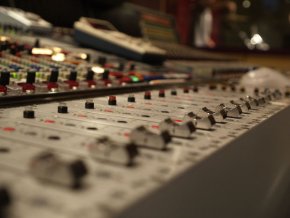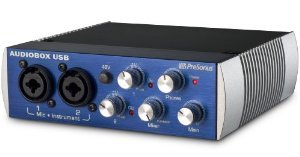| Software Music Machine Archive |
|
Home Recording Studio Setup Tips
When recording vocals or instruments, it can be very easy to get preoccupied with the type of mic you're using to record, the interface that you're using to record it with, and the software that you're recording it into.

But as important those things may be, they should all be considered as secondary concerns to the single most pervasive problem that will prevent you achieving quality results. No matter if you're recording vocals or an instrument, or mixing, mastering, etc.
That problem lies in the acoustics of your room, and as we all can readily admit, the typical apartment complex or home is never adequately designed to accommodate hard-working audio engineers and producers who need to work in properly treated environments in order to ensure that quality of their work remains consistently high.
How Your Room Affects Acoustics
The problem is that when left untreated, any room that you mix or record in will produce a variety of acoustic anomalies such as standing waves, ringing (if in a small room), flutter echoes (usually more common in larger rooms), comb filtering, etc. Understanding the problem is relatively simple, and granted, while there's a bunch of equipment that you could potentially buy to measure the overall frequency response, reverbation time, the decay times for specific frequencies, etc., I'm going to save you a lot of time and money by suggesting one simple, yet very effective technique:
- Walk in the room you want to record your vocals in and clap your hands while listening to how the room responds. Does it sound tinny, metallic, phased, or spacey? I'm certain it does in most cases, and guess what? It didn't take a single piece of acoustic measurement equipment for you to figure that out, did it?
- Depending on how reflective your room is, there are several options you can pursue. If you're simply looking to record vocals, then treating a corner of a room with a few well-placed bass traps and decently sized acoustic panels may be more useful or practical than treating the entire room (which you would do if you were looking to mix and master, for example).
Of course, out of the several manufacturers that you'll find out there claiming to have the best acoustic dampening material known to man (and some of them are pretty fantastic), my advice would be to visit a forum like or Future Producers and read a few threads on the subject, as there are plenty of recommendations to be had as well as links to more in-depth articles (such as an outstandingly detailed article by expert audio Jedi Ethan Winer) that may be of interest as well depending on your particular needs.
I personally use Auralex panels and basstraps that I've installed evenly throughout my entire room to dampen the overall reflections that were initially apparent, and, although my room isn't completely 100% "bomb shelter-style" treated, I've found that it isn't entirely necessary to kill all the reflections in a room to effectively treat it.
Choosing Your Home Studio Interface

Aside from acoustic treatments, you might be wondering about what kind of interface you should buy. For those of you looking for a cheap, inexpensive solution, I would personally recommend the PreSonus Audiobox, which is a small 2x2 USB-powered interface that runs like a charm and has an excellent clean sound that is definitely on par even with higher level audio interfaces and converters. It may not seem like much to start off with, but as far as clean signals and quality sound go, this little gem will give you every bang for your buck!
Additionally, it comes with a basic, limited version of PreSonus's DAW, Studio One for you to try out if you'd like. In regard to latency, this device usually presents little to no issues, though there is a bit of a trick that you can keep in mind as you're recording audio or MIDI passages while using CPU power-hungry soft synths or plugins.
It involves setting the buffer rate (for a better understanding of this concept, here is an informative article on Wikipedia that you can read) to a low number such as 256 or 128 (or even lower if your system can handle it) so that the amount of latency you experience when tracking vocals, instruments, and even soft synths will be pretty low, but given that the CPU will have to work harder to perform calculations per the soft synth (or multiple instances of soft synths, as you're likely to have), then you will likely hear some crackling or dropouts.
Optimizing Your Equipment
At this point you can either take the buffer size up, start rendering tracks with soft synths on them so that you can simply play the audio files in the program, or use a deft combination of both processes to ease the burden on your computer's poor, overtaxed CPU. Rich the Tweakmeister has an excellent article on his site that presents some very interesting and informative latency-based scenarios that are written in plain simple English, and I hi ghly recommend that you check it out of you've got some latency issues that you can't quite wrap your head around!
All in all, there are probably dozens if not hundreds or even thousands of tips that I couldn't provide here that will come in handy for you, but if chances are, if you browse the aforementioned forums that I anchored in this article, you'll more than likely find all the information you need to tackle some bigger challenges that you're likely to come across as you go about the process of installing all your software, performing tests to make sure that all your equipment is working properly, and troubleshooting problems as they rear their ugly heads in the process!
About the Author:
Maxx Donafrio is a professional audio engineer who provides production tips and guides at audioengineeringschool.net.
Related Ariticles:
Tips on using Vocal Compressors when Recording
USB Audio Interface Roundup
The Best Home Recording Microphones
Music Production Software
Share This Article |
audio interfaces
Another awesome audio interface you might want to recommend is the Avid Mbox Mini. It's not much more expensive than the Presonus Audiobox....and it's Pro Tools. For the price, it's hard to do much better for a beginner's home studio.